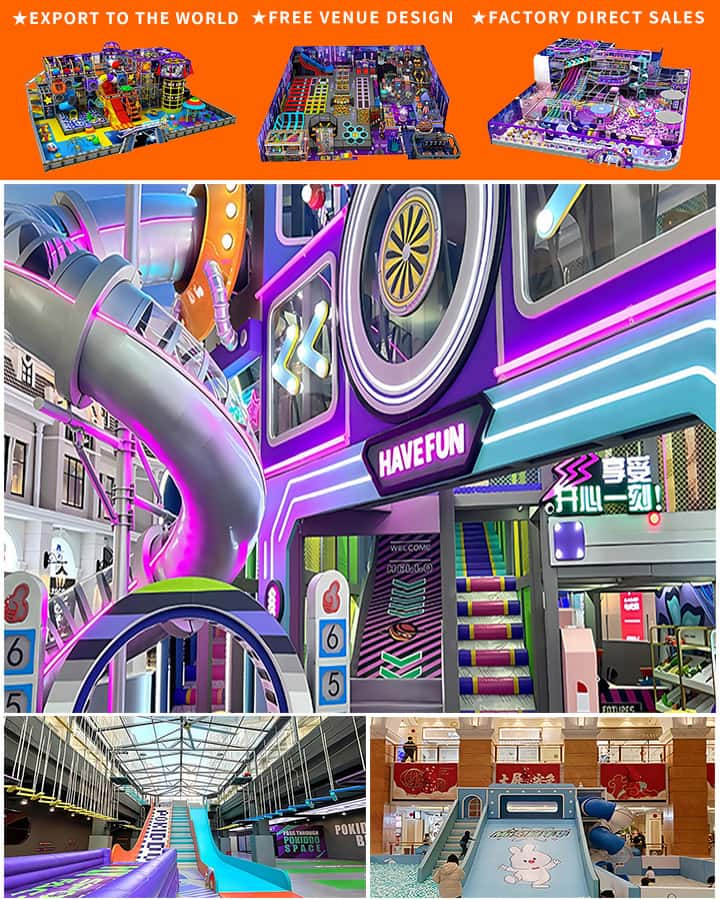Playgrounds are a crucial part of any child’s environment, offering a space for fun, physical activity, and social interaction. Equipping playgrounds with the right equipment is essential to ensure that children have a safe yet enjoyable experience. Here’s an ultimate guide to choosing the best playground equipment for children.
Understanding the Importance of Playground Equipment
Playground equipment plays a vital role in the physical, social, and cognitive development of children. It helps improve motor skills, balance, coordination, and overall physical fitness. Moreover, playgrounds offer a platform for children to develop social skills by interacting with their peers, fostering teamwork, and learning to share.
Types of Playground Equipment
- Slides:
- Slides are classic pieces of playground equipment loved by children. They come in various designs, including straight slides, spiral slides, and wave slides. Choosing the right height and angle ensures they are suitable for different age groups and minimizes injury risks.
- Swings:
- Swings are perfect for developing balance and coordination. They come in several forms, such as traditional belt swings, bucket swings, and adaptive swings for children with disabilities. Ensure that the swing set is securely anchored and has soft landing surfaces like rubber mats or sand.

- Seesaws and Teeter-Totters:
- Seesaws are great for teaching children about balance and cooperation. Modern versions include safety features like non-slip seats and rounded edges to prevent injuries.
- Climbers and Forts:
- Climbing structures like jungle gyms, climbing walls, and play forts challenge children’s problem-solving skills and strength. These should be designed to cater to various age levels and abilities, ensuring safety through proper handrails and footholds.
- Merry-Go-Rounds:
- Merry-go-rounds provide a thrilling spinning experience. They help develop spatial awareness and gross motor skills. Ensure these are securely fastened and have a smooth surface to prevent scrapes.
- Spring Riders and Rockers:
- Spring riders and rockers allow children to bounce and rock, aiding in balance development. These should be made from durable materials and equipped with safety harnesses where necessary.
Choosing Age-Appropriate Equipment
It’s important to consider the target age range when selecting playground equipment. Younger children (toddlers and preschoolers) benefit from low-risk, sensory-rich equipment like small slides, sandboxes, and gentle climbers. School-age children can handle more challenging structures like taller slides, monkey bars, and complex climbing forts.
Safety Considerations
Safety is paramount when it comes to playground equipment. Here are some key safety considerations:
- Material Quality: Choose equipment made from high-quality, non-toxic materials that can withstand weather conditions and frequent use.
- Proper Installation: Ensure all equipment is installed according to manufacturer guidelines and local safety standards. Surface materials like rubber mulch or poured-in-place rubber can reduce the risk of injury from falls.
- Supervision: Always supervise young children at the playground to prevent accidents.
- Maintenance: Regularly inspect and maintain playground equipment to identify potential hazards like rust, loose bolts, or sharp edges.
Inclusive Playground Design
Inclusivity in playground design means creating spaces accessible to all children, including those with disabilities. Features such as wheelchair-accessible ramps, transfer stations, and sensory-rich elements ensure that every child can enjoy the playground experience.
Conclusion
Selecting the right playground equipment involves considering the developmental needs, safety, and inclusivity for all children. With thoughtful planning and attention to detail, playgrounds can become magical places where children learn, grow, and create cherished memories. Invest in quality playground equipment today to give every child the gift of joyful play




